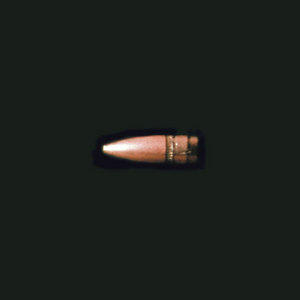Dec. 1, 2006 Research Highlight Physics / Astronomy
All aboard the pulse train
Short bursts of light could track electrons moving around atoms

Incredibly brief pulses of laser light have been made to beat in perfect harmony by RIKEN scientists.
The research could help to probe the fast-moving quantum world inside atoms. Just as photographers can use fleeting flashes of light to freeze bullets in mid-flight, laser scientists can use much shorter bursts of light to watch even faster processes.
In the last few years, laser pulses have become short enough to measure in attoseconds, or billionths of a billionth of a second (10-18 s). One attosecond is to one second what one second is to the age of the universe, and such timescales are brief enough to track the movement of electrons within atoms.
But these flashes are difficult to achieve directly with a conventional laser, because each pulse cannot be shorter than the period (a single cycle) of the optical wave. Instead, longer laser pulses are used to rip electrons away from a diffuse gas. As the electrons are tugged around by the peaks and troughs of the light wave, they produce much shorter pulses of electromagnetic radiation, at higher frequencies than the original laser.
Yasuo Nabekawa and colleagues at RIKEN’s Discovery Research Institute, Wako, and at the University of Tokyo, have now shown that a series of such pulses—known as an attosecond pulse train (APT)—can be ‘phase locked’, so that their electromagnetic fields all rise and fall in perfect synchrony1. Nabekawa says that these pulses could be used to investigate the quantum properties of matter. “We have a strong possibility of controlling the wave functions of atoms or molecules with a phase-locked pulse train,” he suggests.
Their experiment used laser pulses that lasted for 4 x 10-14 seconds (or 40,000 attoseconds) to smash electrons away from a stream of nitrogen gas molecules. A mass spectrometer then sifted through the debris for positively-charged nitrogen atoms (N+) arriving at a detector in distinct waves. These characteristic patterns matched theoretical predictions expected for a phase-locked ATP, and the team calculates that the ionisation produced extreme ultraviolet pulses lasting just 320 attoseconds.
Nabekawa says he now hopes to produce single attosecond pulses that are not part of a train, which should make it easier to take snapshots of atoms in action. “We will try to improve our laser system in order to produce an isolated attosecond pulse with the highest intensity and the finest temporal resolution in the world,” he says.
References
- 1. Nabekawa, Y., Shimizu, T., Okino, T., Furusawa, K., Hasegawa, H., Yamanouchi, K. & Midorikawa, K. Interferometric autocorrelation of an attosecond pulse train in the single-cycle regime. Physical Review Letters 97, 153904 (2006). doi: 10.1103/PhysRevLett.97.153904
